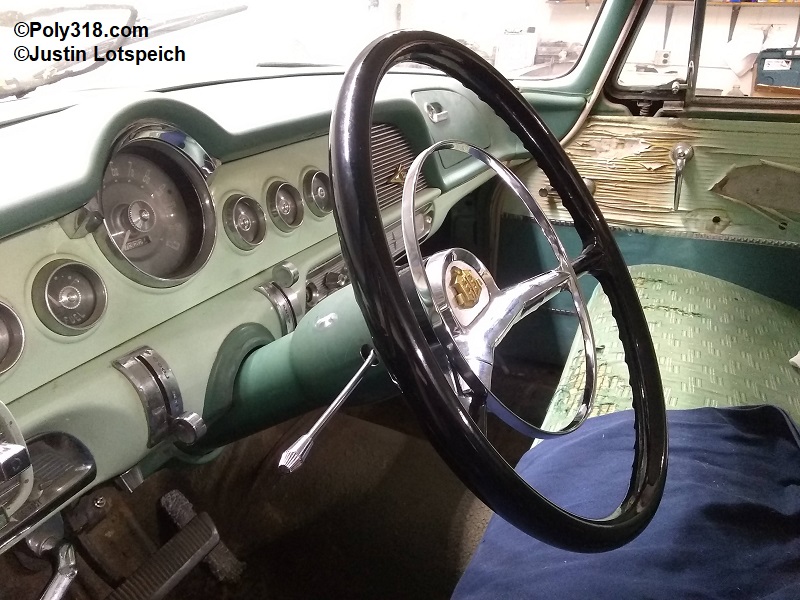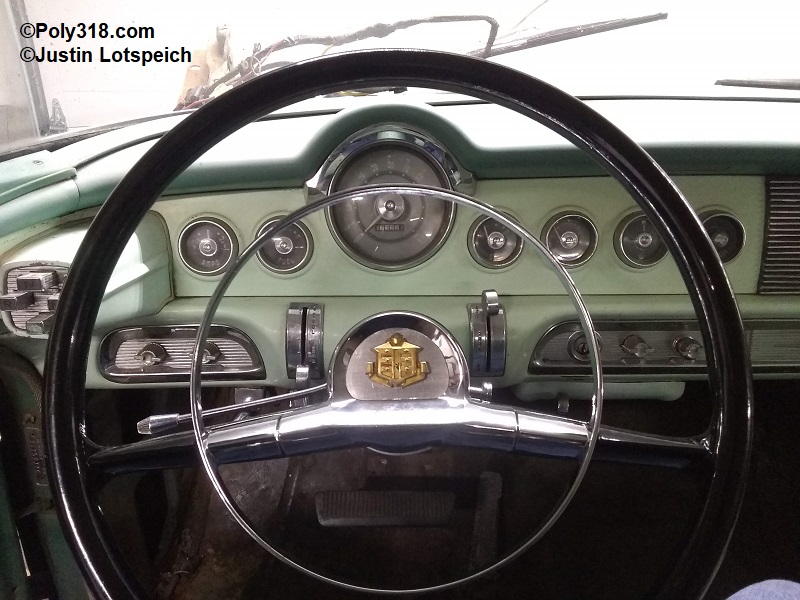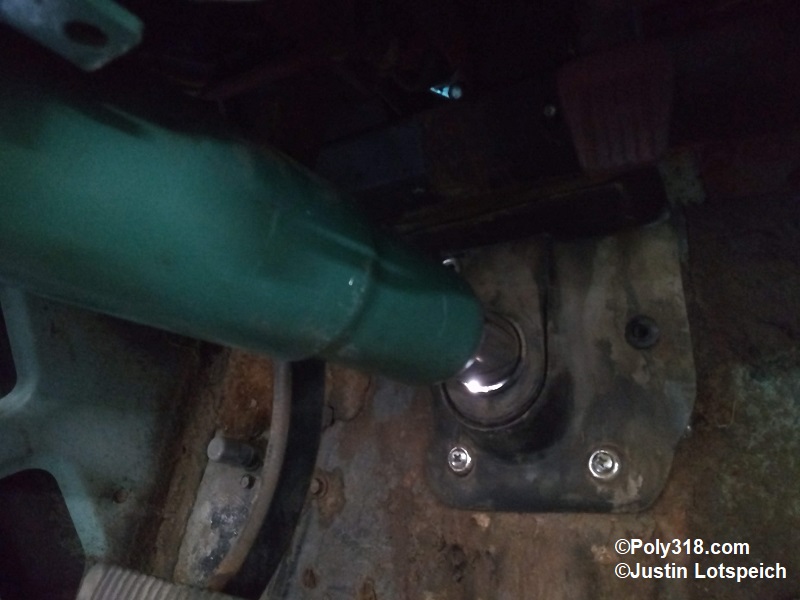1956 Dodge and Plymouth
GM Steering Column Modification
Introduction
For some people, the factory Mopar steering wheels present a few issues ranging from the horn ring is often broken and extremely expensive to replace, the wheel plastic is usually cracked and requires expensive restoration, the factory wheels are large at 19″ diameter, the factory shaft splines do not allow interchanging other wheels, and no adapters are on the market to fit GM or Ford wheels. All of these variable got in my way with the 1956 Dodge coupe build, so I decided to look into installing a GM 3/4″ steering shaft with 11/16″ -36 splines, an upper and lower bearing that fits the ’56 housing and accepts the 3/4″ shaft, and modifying the ’56 turn signal switch to work with whatever wheel I installed. Because I was running rack and pinion steering, I no longer had the bottom of the column secured by the steering box and would need the shaft shorter for proper intermediate shaft u-joint angle. I quickly discovered that the quality bearing sleeves/bearings and steering shaft needed were as expensive as a new universal GM column assembly. I decided to purchase a fixed (non-tilt) 30″ GM universal column, gut the ’56 housing, and fit the GM column assembly into the ’56 housing (Figure 1). While I don’t have a Chrysler or DeSoto column to confirm, I surmise this process may work for all Mopar divisions at least in 1955 – 1956.
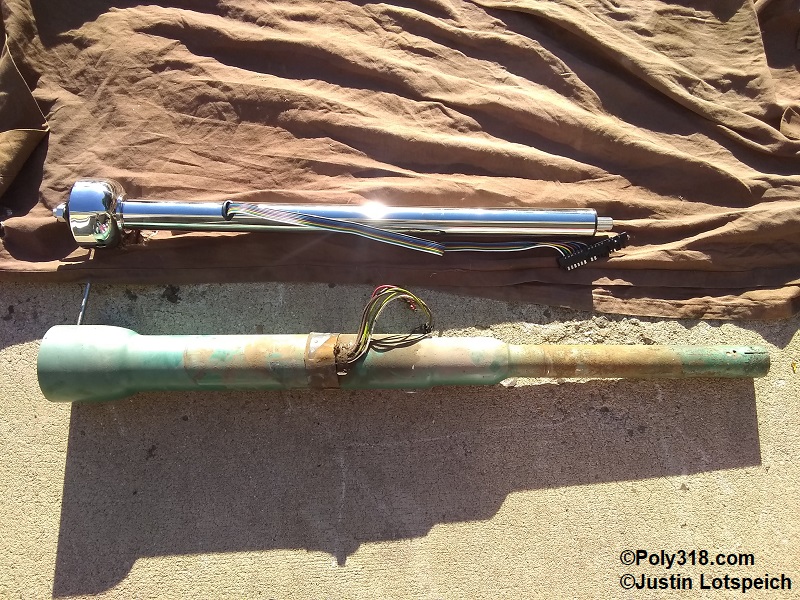
Column Modification
I began by removing the column from the steering box and car and removing the turn signal switch assembly. The first obstacle was the switch and bearing mounting plate that was spot-welded in four different places (Figure 2). I struck the plate downward with a cold chisel at each spot weld until the plate eventually tore loose (Figure 3). I will weld up and grind the indentations left on the outside of the housing from the torn spot welds. The next issue was the lower housing tube outside diameter of 1-3/4″ matched the GM column, so I cut off the ’56 housing where it flares larger and used a sanding disc to slowly trim the housing back until I could slide the GM column through (Figure 4). A similar issue, the GM turn signal housing was the same outside diameter as the ’56, so I slide the GM column into the ’56 housing until the both contacted and drew a line around the GM housing (Figures 5 – 6). I removed the GM wiring harness plug in order to remove the turn signal switch and harness. I used a cutoff wheel to cut along the line being careful not to cut into the turn signal towers (Figure 8). I eased the sharp edges with a sanding disc and slowly sanded the perimeter flat until the until slid snugly into the ’56 housing (Figure 7). For my setup, I chose to run an aftermarket American Retro 15″ 1957 Chevrolet wheel since its overall design mimics the ’56 Dodge with a full-circle horn right, ribbed rim, etc. I installed the wheel including the horn cam and spring. The steering wheel hub is smaller in diameter than the ’56 housing, so I will use an IDIDIT kit 2612100040 that includes an aluminum trim ring to install a 1955 – 1968 GM wheel onto a larger diameter universal steering column. This trim ring glues to the back of the steering wheel and is 3/16″ thick. With the ’56 column clamped in a vice, I dropped in the GM assembly until I measured 1/4″ between the ’56 housing and wheel to give me 1/16 clearance that can be adjusted by sanding the trim ring if necessary (Figure 8). I aligned the GM turn signal switch lever with the hole in the ’56 column. I marked the GM housing where it protruded from the ’56 housing at the bottom for a reference and marked the outside of the ’56 column to clearance for the turn signal lever and to drill a new hole for the hazard light knob (Figures 9 – 10). With the GM assembly removed, I drilled a 3/8″ hole for the hazard knob and used a carbide bit in the die grinder to clearance the turn signal lever hole (Figures 11 – 12). I reinstalled the GM turn signal switch and installed the GM assembly into the ’56 housing, feeding the wires through the hole. Using a 130-amp argon MIG welder, I tack welded the bottom of the GM column to the ’56 housing in two places (Figure 13). When I am confident the assembly functions as intended after test driving, I will continuous weld and smooth out this joint before painting the housing.
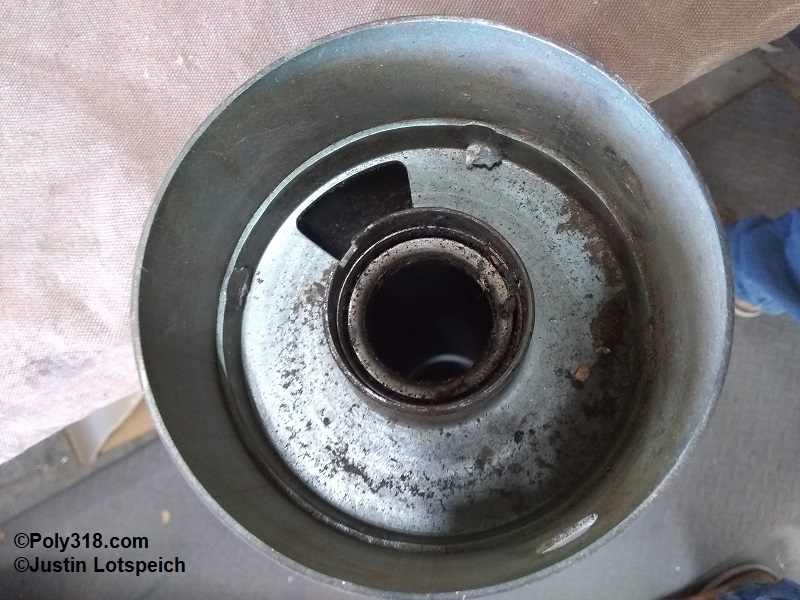
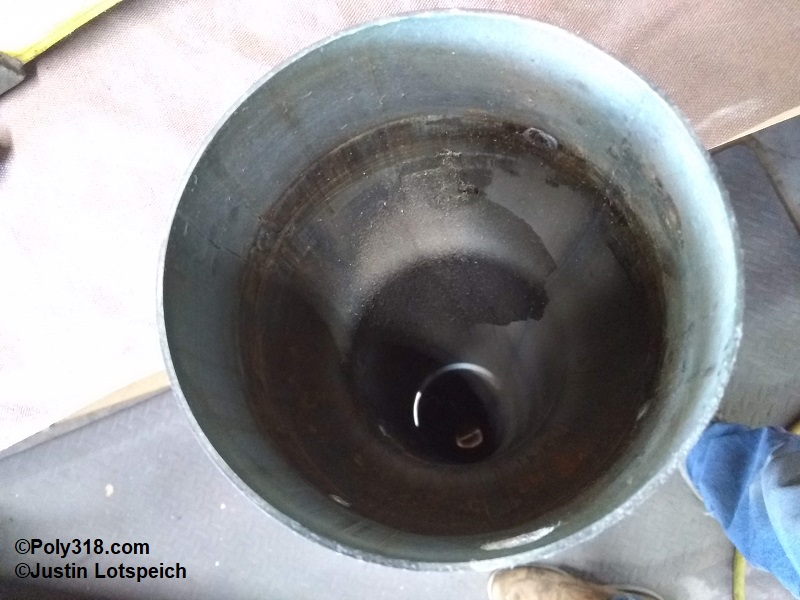
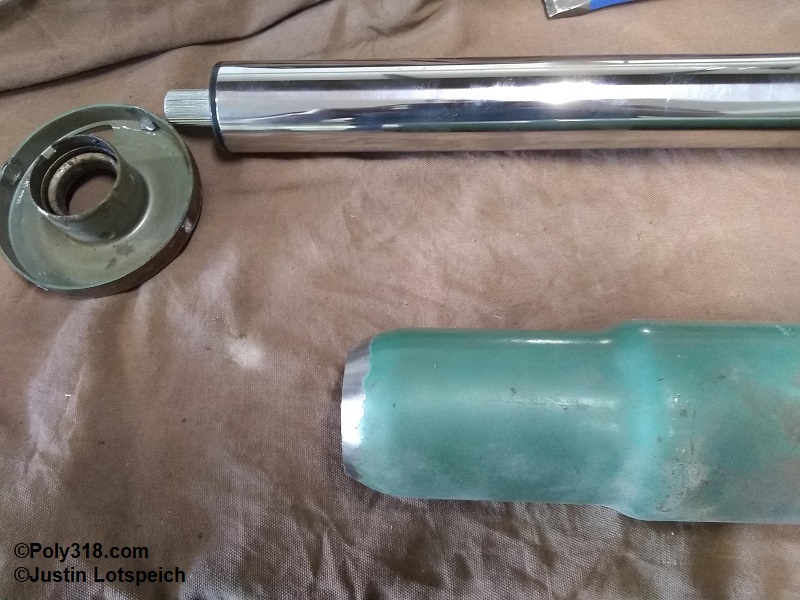
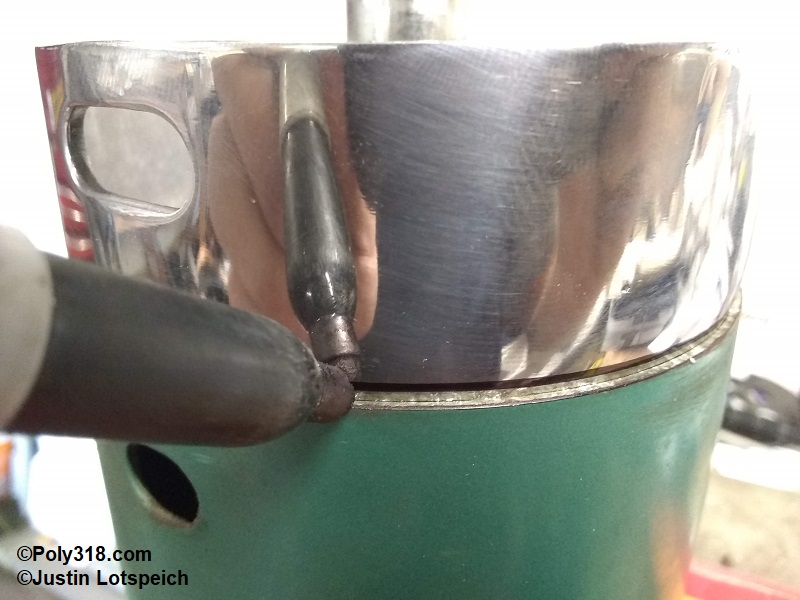
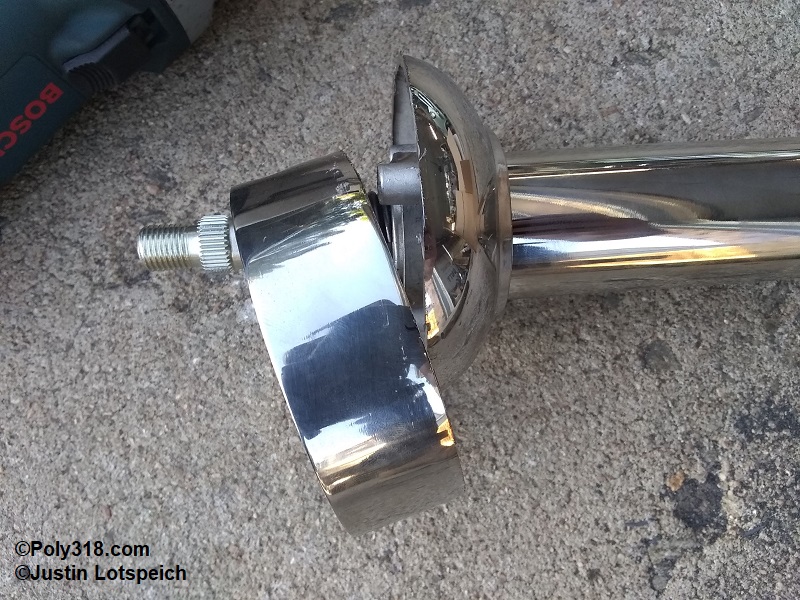
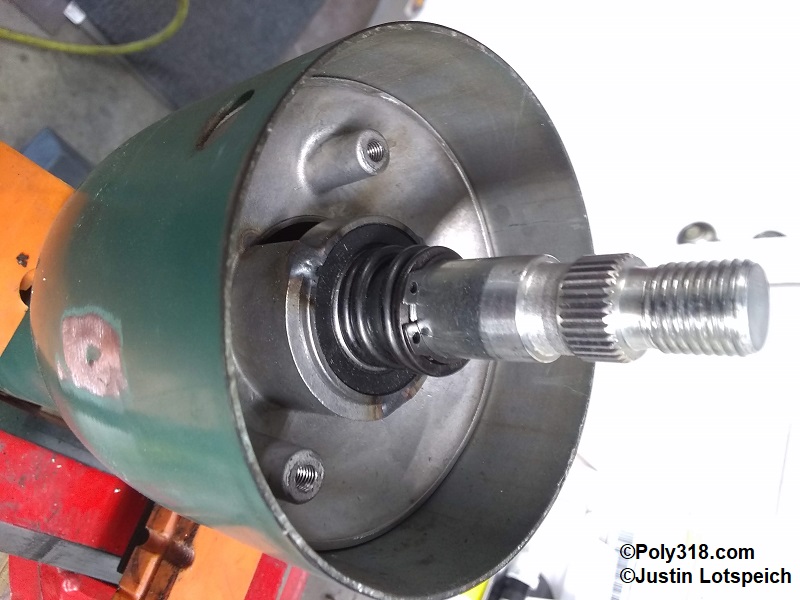
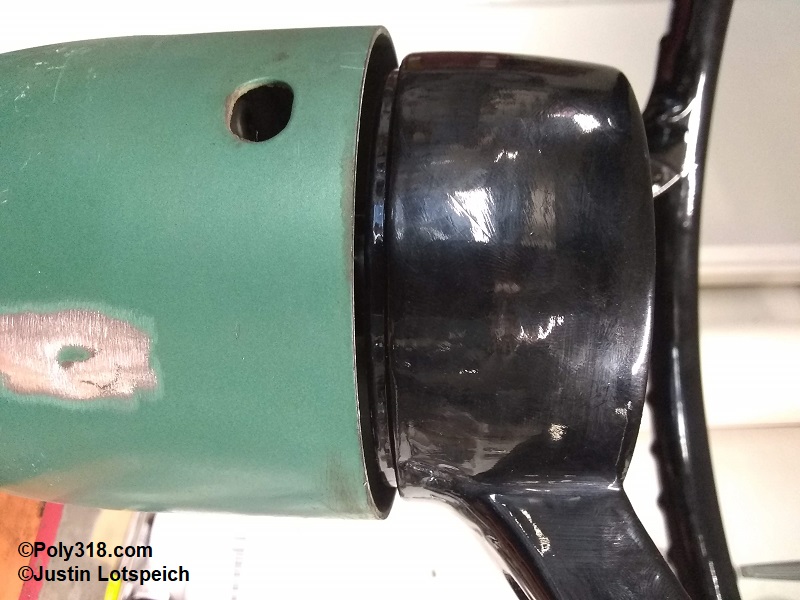
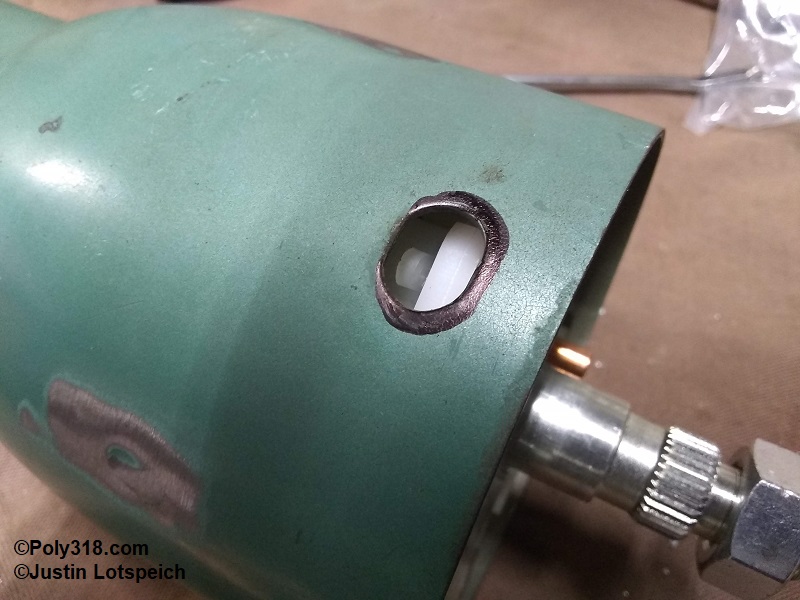
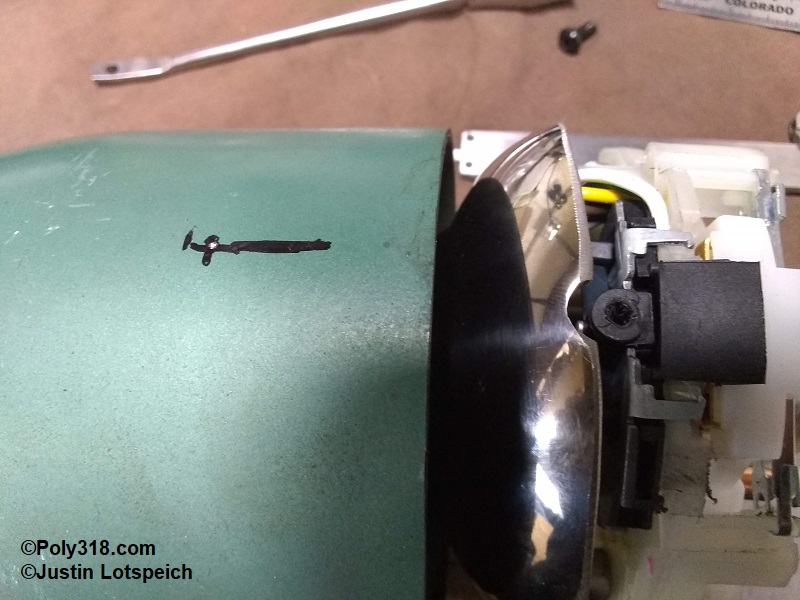
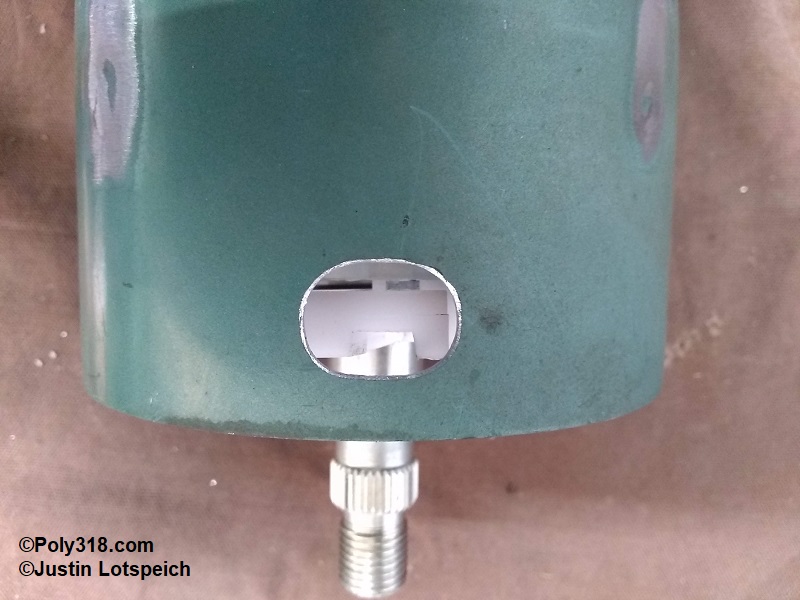
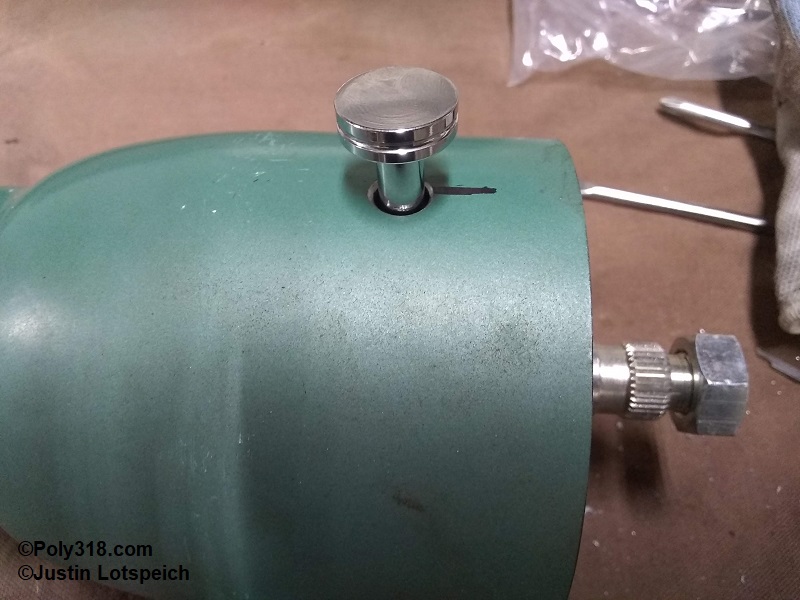
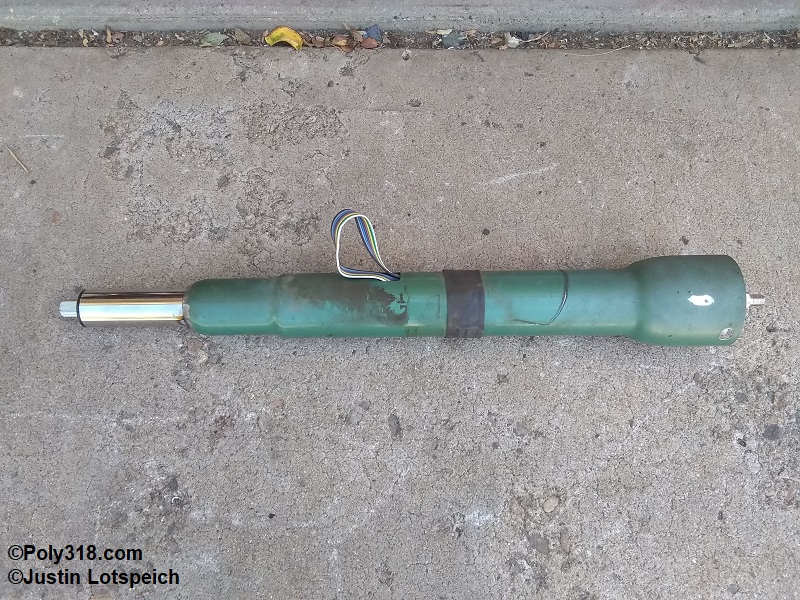
Turn Signal Lever Modification
The turn signal lever that came with the universal GM column looked out of place for the ’56 interior, so I installed the ’56 knob onto the GM lever. With the ’56 lever in the vice, I hit the side of a 1/4″ open-end wrench against the ’56 knob until it drove off. With the GM lever in the vice, I used a pair of vice grips to unscrew the knob that was secured with red loctite (Figure 14). At the bench grinder, I ground down the GM threads until the ’56 knob tried to fit snugly (Figure 15). I mixed up metal-reinforced epoxy that will withstand the temperatures of the chroming process, applied liberally to the lever, and pressed on the knob using a block of wood and hammer (Figure 16). After getting the assembly installed (photos in the next section), I decided to place a slight bend in the lever to align it parallel with the steering wheel arm (in progress).
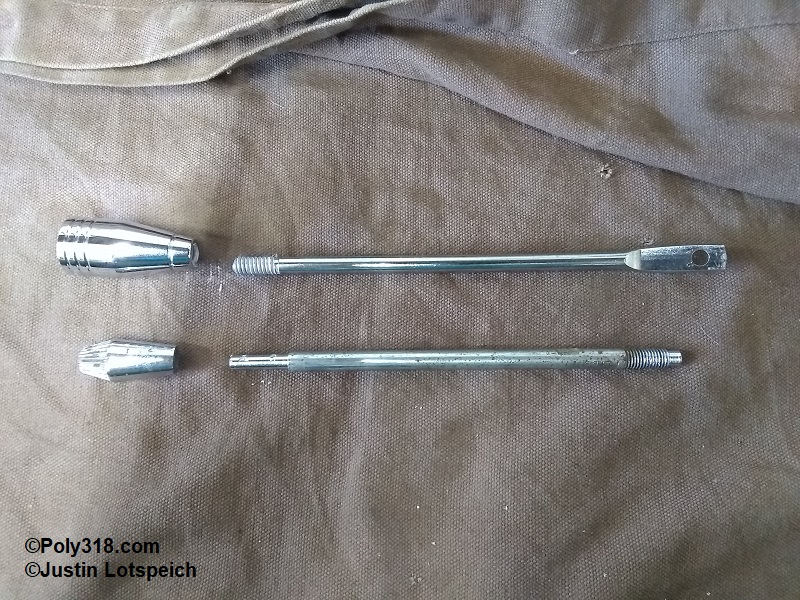
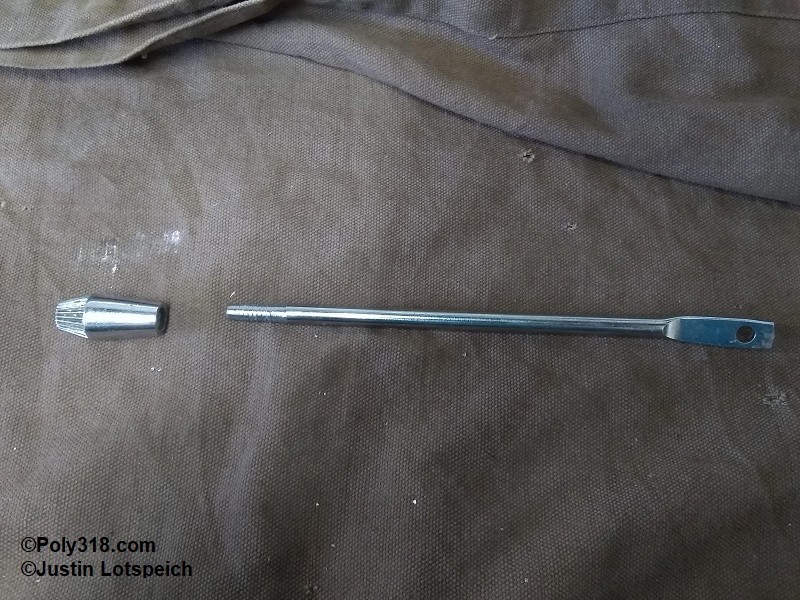
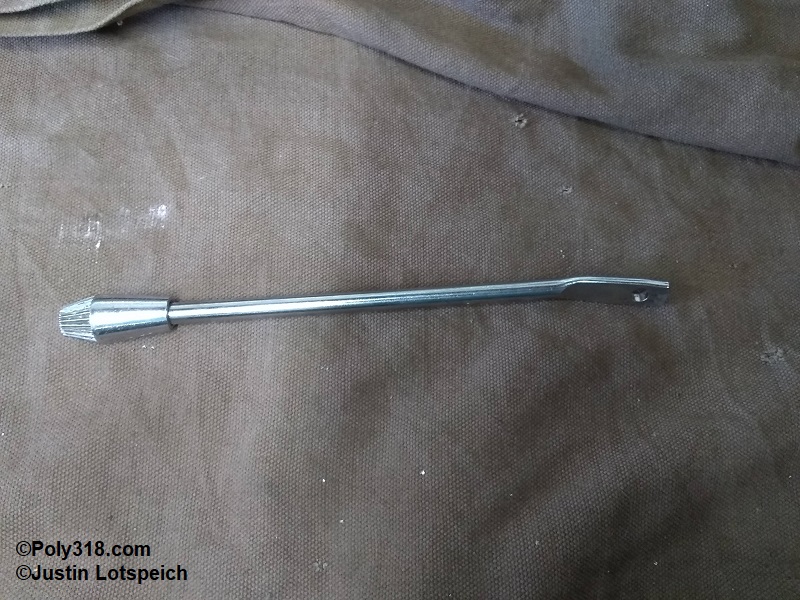
Horn Ring Modification
The aftermarket ’57 Chevy steering wheel had a cheap-looking plastic center insert with the script “Classic” overlaying a “V” (Figure 17). The “V” isn’t a bad touch, but the script had to go. I removed the plastic insert (Figure 18), traced it onto a piece of 1/8″ aluminum sheet, and cut out a new plate. After drilling out the rivet head, I removed the 1956 Dodge emblem from the horn center, filed the backside to flatten out the curve, drilled holes in the aluminum plate, used epoxy through the rivet hole to secure the emblem onto the aluminum plate, and installed it into the center (Figure 19 – 21). I will eventually paint the plate the same color as the steering wheel and repaint the color on the emblem.
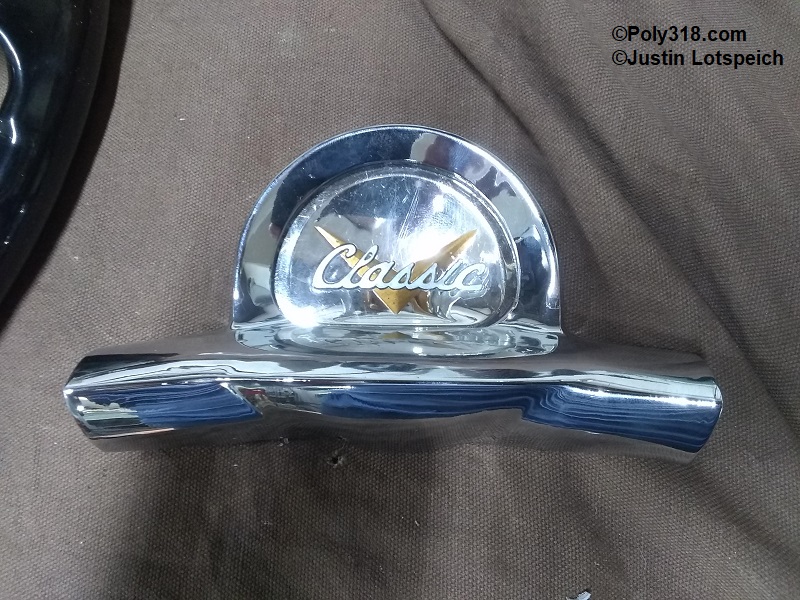
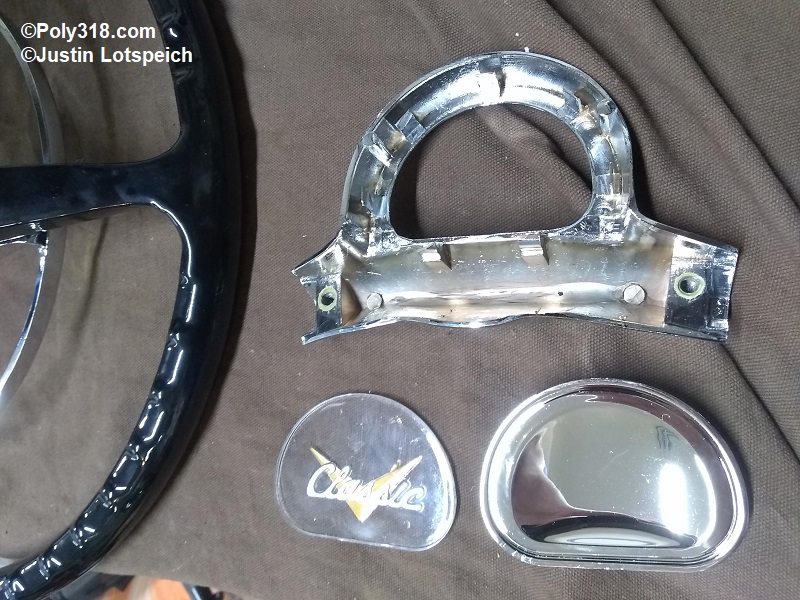
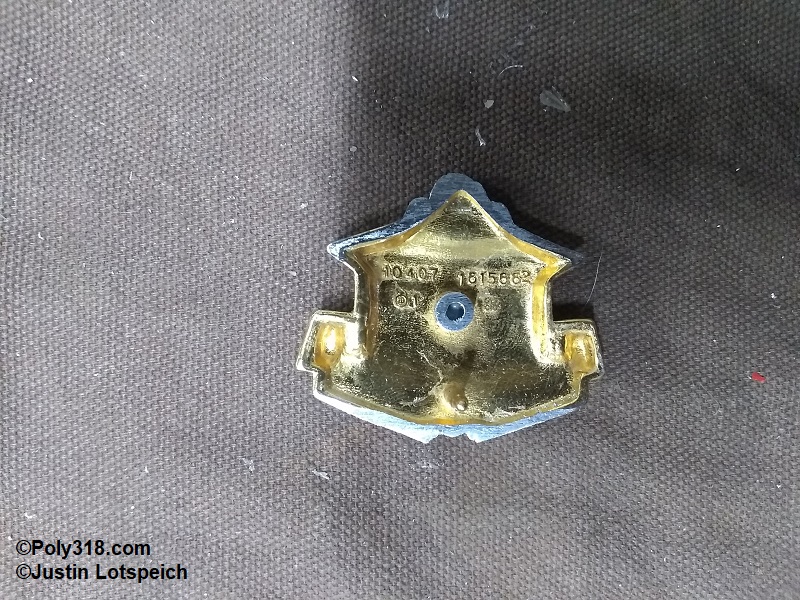
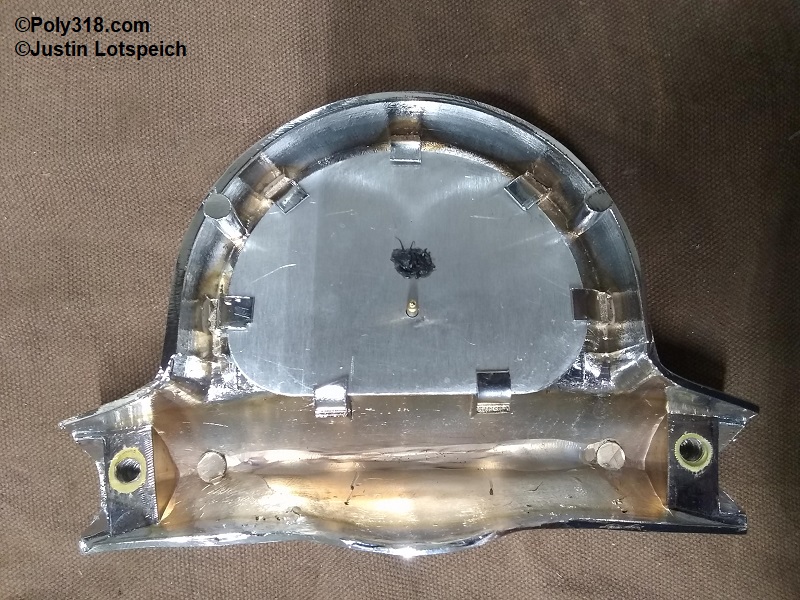
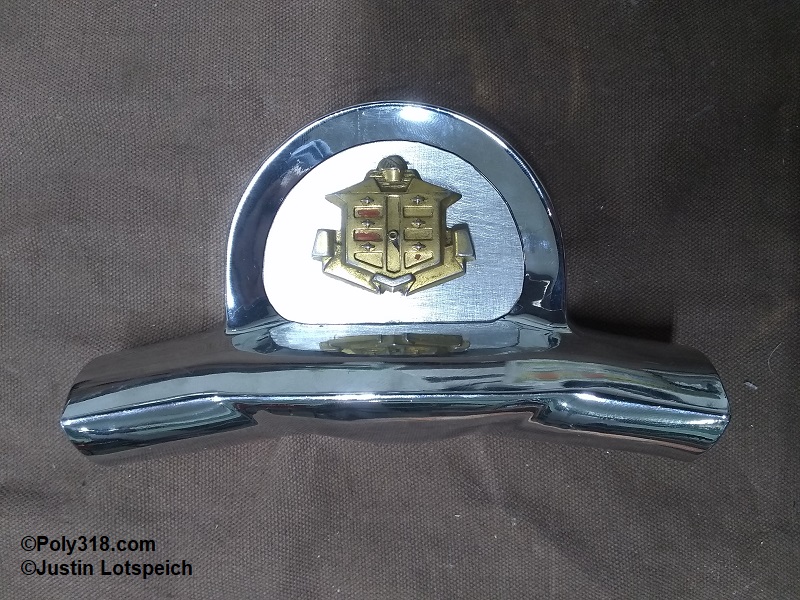
Lower Steering Column Mount
I used a piece of 1/8″ steel plate and the original clamp that secured the column to the steering box to build the lower mount. After slicing the plate halfway through, I broke it in the vice to follow the firewall contour and drilled 1/4″ holes that aligned with the plastic dust cover and firewall access cover. I slipped the original clamp over the column housing, installed the new 1/8″ plate cover, and tack welded the clamp to the inside of the cover, which will be hidden by the plastic dust cover. I removed the plate and finished welding the clamp halfway around leaving one half free to clamp against the housing and welded up most of the kerf at the breaks (Figures 22 – 25).
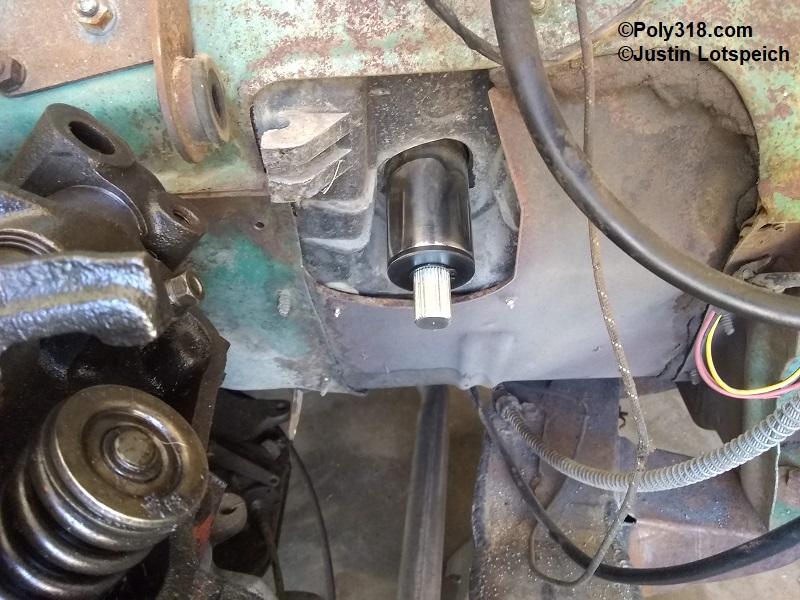
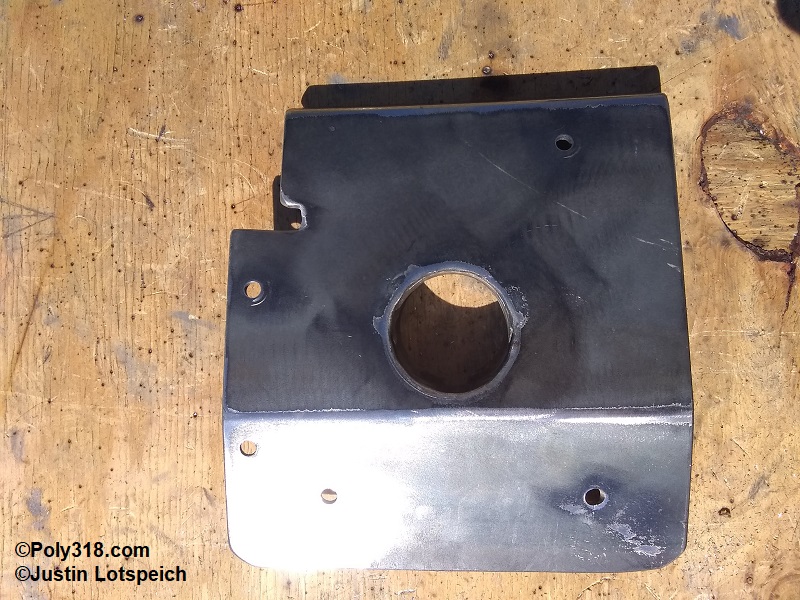
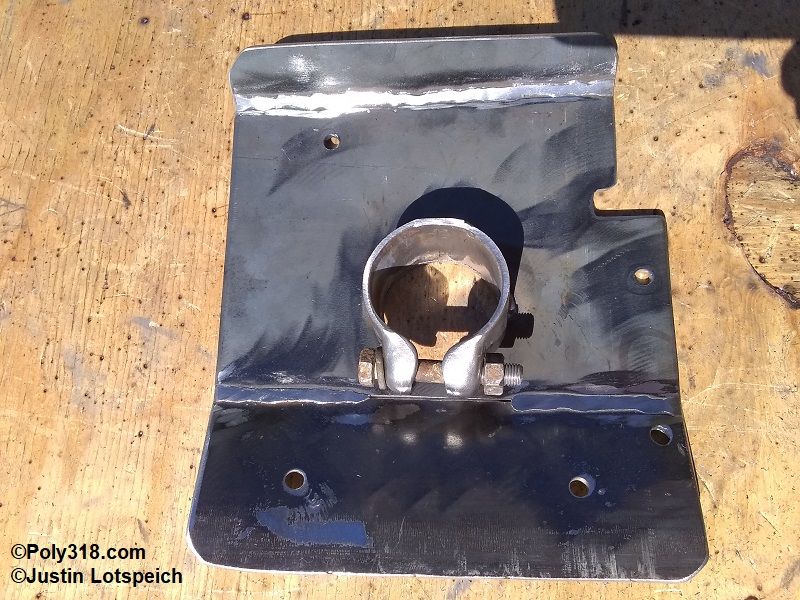
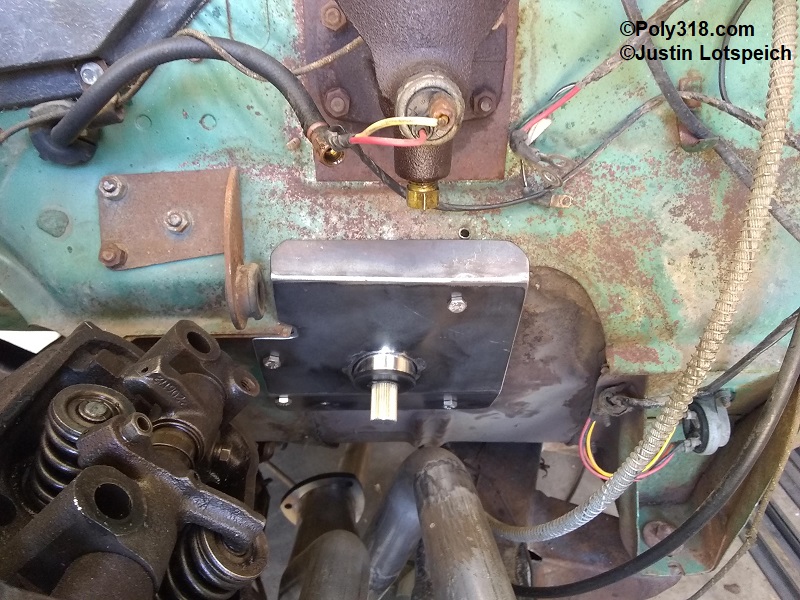
Finished Installation
I installed the column into the car to the factory location and installed the steering wheel (Figures 26 – 28). I am very happy with the assembly and the 15″ wheel.
